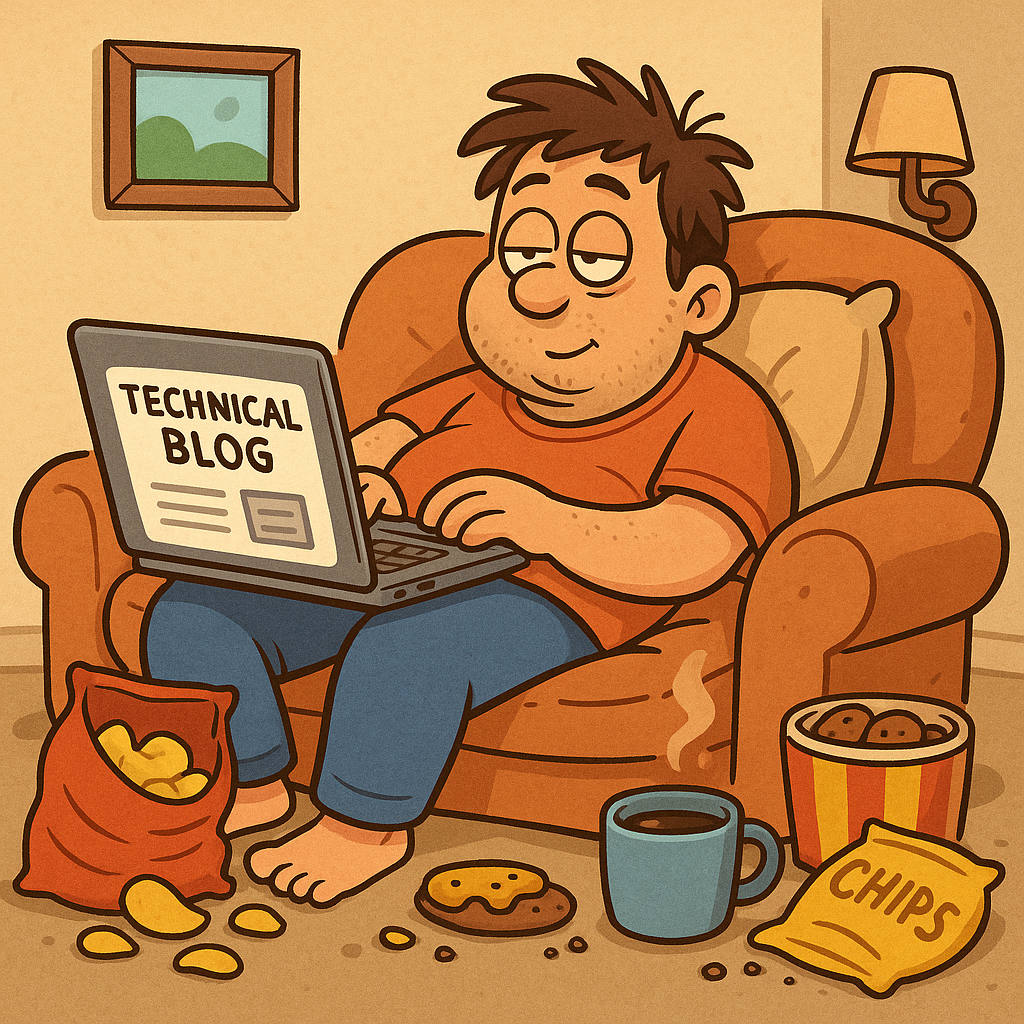Understanding the Differences Between Multitasking and Multiprogramming for Tech Interviews
 Darsh Patel
Darsh PatelTable of contents
- 🎯 Why Should You Care About This Topic?
- 🍳 The Kitchen Analogy: Making Sense of Chaos
- 👨🍳 Multiprogramming: The Classic Chef
- 🚀 Multitasking: The Speed-Demon Kitchen
- 📊 The Real Difference (In Simple Terms)
- 🎮 Real-World Examples That Actually Make Sense
- Multiprogramming in Action:
- Multitasking in Action:
- 🔥 Interview Questions That'll Make You Shine
- 🎯 Question 1: "What's the difference between multiprogramming and multitasking?"
- 🎯 Question 2: "Which one is better?"
- 🎯 Question 3: "Can you give practical examples?"
- 🧠 Memory Tricks for Interview Day
- The 3-2-1 Rule:
- ⚡ Advanced Questions (The Plot Twist!)
- "What happens if a multitasking system has too many tasks?"
- "Why don't we use multitasking everywhere?"
- 🎯 Types of Multitasking (Bonus Points!)
- Preemptive Multitasking (The Boss Mode)
- Cooperative Multitasking (The Polite Mode)
- 🚀 Pro Tips for Interview Success
- 1. Use the "Sandwich Technique":
- 2. Show You Understand the "Why":
- 3. Connect to Real Experience:
- 🎉 Conclusion: You're Now Interview-Ready!
Hey there! 👋 Are you one of those people who can't sit through a 2-minute YouTube video without checking Instagram? Do you lose focus faster than your phone loses battery? Perfect! This blog is made just for you! 📱
Today we're diving into Multitasking vs Multiprogramming - probably the most asked question in fresher tech interviews. But instead of boring you with textbook definitions that'll make you want to take a nap, we're going to explain this using analogies that actually make sense (and maybe make you hungry too! 🍕).

🎯 Why Should You Care About This Topic?
Before we jump in, let's get real for a second. Every single tech interview for freshers includes this question. It's like asking "What's your name?" - except way more technical and way more important for getting that job offer! Companies love this question because it tests whether you understand basic operating system concepts without getting too deep into the scary stuff.
Plus, once you "get it," you'll sound super smart explaining it to your friends (who will probably pretend to understand while secretly googling it later) 😏.
🍳 The Kitchen Analogy: Making Sense of Chaos
Let's start with something we all understand - FOOD! Because let's be honest, thinking about food is way more interesting than thinking about CPUs and memory management.
👨🍳 Multiprogramming: The Classic Chef
Imagine you're a chef in a traditional kitchen. You're making multiple dishes, but here's the catch - you're the only chef, and you can only focus on one thing at a time.
Here's how it works:
You put the pasta in boiling water (Program 1 starts)
While pasta is cooking, you can't just stand there! So you start chopping vegetables for the salad (Switch to Program 2)
Pasta is ready? Drop everything and go back to the pasta (Switch back to Program 1)
Pasta is served, now back to that salad (Continue Program 2)
The key insight: You only switch tasks when the current task is waiting for something (like pasta boiling). You don't randomly switch every 5 minutes - that would be chaos!
This is multiprogramming - the CPU switches between programs only when the current program needs to wait (usually for slow input/output operations)
🚀 Multitasking: The Speed-Demon Kitchen
Now imagine you're a superhuman chef with multiple timers, or better yet, you have multiple chefs working together!
Here's the magic:
Every dish gets exactly 5 minutes of attention, no matter what
Timer goes off? Switch! Even if you're in the middle of stirring something
Pasta gets 5 minutes, salad gets 5 minutes, soup gets 5 minutes, repeat!
Everything progresses simultaneously
The key insight: Tasks get fixed time slices whether they need it or not. It's like having ADHD but in a productive way!
This is multitasking - the CPU gives each task a fair share of time using fixed time slices.
This makes it feel as if every job is progressing. (even though it might be progressing slowly).
📊 The Real Difference (In Simple Terms)
Let me break this down like you're explaining it to your grandma:
| Aspect | Multiprogramming (Classic Chef) | Multitasking (Speed-Demon Chef) |
| When do you switch? | Only when current task is waiting | Every few seconds, no matter what |
| User experience | Background worker (you don't see it) | Interactive (you can chat with multiple dishes!) |
| Real-world example | Server running backups while processing emails | You scrolling Instagram while listening to Spotify while texting |
| Main goal | Keep the chef (CPU) busy | Make customers (users) happy |
🎮 Real-World Examples That Actually Make Sense
Multiprogramming in Action:
Think of your phone's background processes:
Checking for new emails
Updating app data
Monitoring battery levels
Syncing photos to cloud
Your phone switches between these only when needed, not every few seconds .
Multitasking in Action:
This is literally what you're doing right now! You're:
Reading this blog
Maybe listening to music
Getting WhatsApp notifications
Each activity gets some of your attention in time slices. Sound familiar? That's multitasking!
🔥 Interview Questions That'll Make You Shine
🎯 Question 1: "What's the difference between multiprogramming and multitasking?"
❌ Boring Answer: "Multiprogramming keeps multiple programs in memory and switches between them. Multitasking uses time-sharing."
✅ Awesome Answer: "Great question! Think of it like cooking. Multiprogramming is like a chef who switches between dishes only when one is waiting - like when something's in the oven. Multitasking is like having multiple timers where each dish gets exactly 5 minutes of attention before switching to the next, no matter what. Both keep the kitchen busy, but multitasking is more fair to all the dishes!"
🎯 Question 2: "Which one is better?"
❌ Boring Answer: "Both have advantages depending on the use case."
✅ Awesome Answer: "It's like Netflix vs YouTube! Multiprogramming is like binge-watching one series efficiently and wait for the next season 😂. Multitasking is like your school/university lectures. The subjects changes fixed duration irrespective of the syllabus. For servers, multiprogramming wins. For user experience, multitasking takes the crown! 🏆"
🎯 Question 3: "Can you give practical examples?"
❌ Boring Answer: "Multiprogramming: server processes. Multitasking: desktop applications."
✅ Awesome Answer: "Sure! Multiprogramming is like how your mom cooks - rice goes on the stove, while it's cooking she chops vegetables. Only switches when needed! Multitasking is like you at 2 AM - scrolling Instagram, listening to music, texting friends, and pretending to study. Everything gets a little attention!"
🧠 Memory Tricks for Interview Day
The 3-2-1 Rule:
3 things multiprogramming does: Maximizes CPU usage, handles multiple programs, switches only when waiting
2 key differences: Multiprogramming = event-driven switching, Multitasking = time-driven switching
1 easy way to remember: Multiprogramming = Programs waiting, Multitasking = Tasks sharing time
⚡ Advanced Questions (The Plot Twist!)
"What happens if a multitasking system has too many tasks?"
Fun Answer: "It becomes like trying to juggle 20 balls at once - you spend more time catching falling balls than actually juggling! The system becomes a 'context-switching maniac' and everything slows down. This nightmare scenario is called thrashing - sounds scary, right? 😱"
"Why don't we use multitasking everywhere?"
Fun Answer: "Same reason you don't need a Swiss Army knife to spread butter on toast! Some systems are happier being simple. A traffic light doesn't need to multitask - it just needs to do red, yellow, green really well. Sometimes boring is beautiful! 🚦"
🎯 Types of Multitasking (Bonus Points!)
Preemptive Multitasking (The Boss Mode)
The operating system is the boss - it can interrupt any task anytime. Like a strict teacher who can stop anyone from talking whenever they want .
Cooperative Multitasking (The Polite Mode)
Tasks voluntarily give up control when they're done or waiting. Like a really polite conversation where everyone waits for their turn .
Most modern systems use preemptive because, let's face it, not all programs are polite!
🚀 Pro Tips for Interview Success
1. Use the "Sandwich Technique":
Start with a simple definition
Give your awesome analogy
End with the technical term
Example: "It's like cooking → [awesome kitchen analogy] → which demonstrates multiprogramming's context-switching mechanism"
2. Show You Understand the "Why":
Don't just explain what they do - explain why they exist:
Multiprogramming exists because CPU is super fast, I/O is super slow
Multitasking exists because users want to do multiple things at once
3. Connect to Real Experience:
"I actually experience multitasking every day when I'm coding with music on, checking Stack Overflow, and running my program - that's exactly how my OS manages these tasks!"
🎉 Conclusion: You're Now Interview-Ready!
Congratulations! 🎊 You've just learned one of the most important concepts in operating systems, and you did it without falling asleep once!
Quick Recap in theoretical words:
Multiprogramming (Batch Systems):
Needed for efficiency as single user/job cannot keep CPU and I/O busy at all times.
Multiprogramming organizes jobs (code and data) so CPU always has one to execute
One job selected and run via job scheduling
When it has to wait (for I/O for example), OS switches to another job
Multitasking (Time-sharing):
CPU switches jobs so frequently that users can interact with each job while it is running.
If processes don’t fit in memory, swapping moves them in and out to run
Virtual memory allows execution of processes not completely in memory
Remember: The best technical interviews feel like conversations, not interrogations. Use these analogies, show your personality, and demonstrate that you can explain complex concepts in simple terms - that's exactly what employers want!
Now go ace that interview and land your dream job! And when you do, remember where you learned this awesome kitchen analogy 😉
Good luck, future tech star! You've learnt something new today! 💪✨
P.S. Drop a comment if you think there needs to be some improvement. If this helped you, share it with your friends who are also preparing for interviews. Sharing is caring, and everyone deserves to understand multitasking vs multiprogramming without wanting to take a nap! 😴→😄
Subscribe to my newsletter
Read articles from Darsh Patel directly inside your inbox. Subscribe to the newsletter, and don't miss out.
Written by
